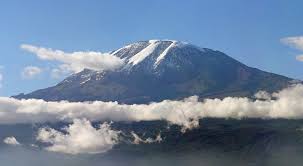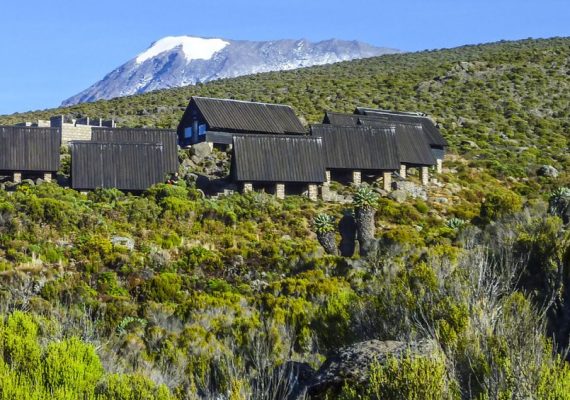Mount Kilimanjaro, introduction and useful facts about climbing are available on this website page. Tourist planning for adventure mountaineering, climbing, trekking, hiking Kilimanjaro need reliable information. Kilimanjaro climbing will be successful by reading below Mount Kilimanjaro travel tips. Then after getting all tips, climbers can climb with success and comfort. Contact us for quick advice, and live chat about frequent asked questions on Kilimanjaro, Send an email: info@kili-tanzanitesafaris.com
Mount Kilimanjaro is located within Tanzania Northern Part. Kilimanjaro is located just (Location: 3.07 S, 37.35 E) near the equator, in the Tropical Country yet its peak covered by snow throughout the year. Rising abruptly from the open plains, capped by snow and frequently fringed by clouds, it is one of Africa’s classic images. Mount Kilimanjaro is the highest Mountain in Africa 5895m/19340 ft. is the only Mountain in the World with the perfect symmetrical crater. Is the highest free standing Mountain in the World? Is a metaphor for the compelling beauty of East Africa? Kilimanjaro is one of the highest walkable summits on the planet, a beacon for visitors from around the world. Mount Kilimanjaro, was described by Ernest Hemingway in his famous book. This article about Mount Kilimanjaro facts is prepared by a professional Kilimanjaro guides company, in Tanzania.

KILIMANJARO is the highest mountain in Africa and the tallest freestanding mountain known to man. It is a mountain where you can hike for more than 90 kilometers, gain 4 000 meters in altitude, traverse rain forest, moorland, alpine desert, snow fields and ice cliffs, all virtually on the equator! A truly unforgettable and fascinating adventure. If you will be lucky to climb to the summit of Kilimanjaro, you will see a sign board erected by the Tanzanian government. The sign board reads "Congratulations! You are now at Uhuru Peak, Tanzania, 5,895 m. You are assured of quality services, and hike to Uhuru peak through a trustworthy Kilimanjaro climbing company named as Kilimanjaro Tanzanite Safaris DMC. Here are travel reviews, and you can hear direct from your fellow visitors who have done Kilimanjaro through this company, through the TripAdvisor reviews.
The Topography of Mount Kilimanjaro is filled with montane forest, volcano rocks, glacier, and Snow. Kilimanjaro rises from plains at approximately 2000 meters, right up to 5 895 meters. An ancient volcano, it now lies dormant except for some tell tale signs of fumaroles in the ash pit. Two other peaks, namely Mawenzi and Shira, flank the main peak of Kibo. These peaks form spectacular photographic backdrops when viewed from various vantage points along the routes to the summit. The different routes to the summit pass through five ecological zones, being the cultivated lower slopes, Montane forest, heath and moorland, alpine desert and the ice capped summit. The lower slopes of the mountain are mainly used for agricultural purposes.
The climate here is ideal for the production of coffee, an industry that Tanzania is famous for. Further up, a rain forest belt encircles the mountain up to about 2 00 meters. As you proceed higher, you pass through the heath which changes into moorland, semi-desert at altitude, progressing into total desert and finally into an alpine region with permanent ice glaciers. The higher slopes are covered with scree, loose stones resembling gravel, making it more difficult to negotiate. The main glaciers edging their way down the slopes of Kibo are Heim, Rebmann, Decken, Arrow and some smaller ones. These glaciers form the permanent ice cap of the mountain, although they are, as a result of global warming, believed to receding each year.
The Climate
Being only 3 degrees south of the equator, Kilimanjaro is influenced by the passage of the Inter-tropical Convergence Zone. There is a constant feeling of summer, and there are two rainy seasons to keep in mind. The highest rainfall occurs from March lasting until about the end of May. This is monsoon time. Slightly less rain falls during the short rainy period, which occurs from around October to November, but can extend into December. Apart from these factors, climbing Kilimanjaro remains fairly constant throughout the year.
The maximum rainfall occurs in the forest belt, where it can reach up to 2000 mm per year. At the summit, which can be, describe as a "high altitude desert", the rainfall reaches less than 100 mm per year. Rain (and snow at higher altitudes) can however be encountered at any time of the year.
The average temperatures at the foot of the mountain are 25°-30° C and on the summit, it can range from minus 10° -20° C. At 3000m the day temperatures range from 5°-15° C, and at night frost is normally encountered. Clearly a large variation, making it more interesting to summit the mountain.

How to prepare to climb mount Kilimanjaro.
For comfort and success Kilimanjaro trekking preparation is needed. Climbing gears, health and hygienic is needed to be available. With the adequate preparation any reasonably fit person above the age of 12 years can reach the summit successfully, in fact the oldest person to date to reach the summit was a Frenchman Valtee Daniel at an age of 87!! Preparation both physically and mentally is the keywords for success-- this web site contains valuable and comprehensive information obtained from 9 years of experience and through the feedback from more than 4300 clients. We believe it will positively contribute to your chances of successfully conquering Kilimanjaro.
Best Season to climb Mount Kilimanjaro is the time of the year with dry season, and less wind. To climb Kilimanjaro on favorite weather is key to success trekking to Kilimanjaro summit. December, January, February and March are best months because weather is warm and sky is clear. Either June to November is good or most tourists come this period because they have holidays on summer time.
Importance of climbing Kilimanjaro in full moon dates
Going to Kilimanjaro on a cloudless full moon night is a wonderful adventure experience. The snows and glaciers glittering in the moonlight is surely attractive. Truly reasons the moonlight will make the final night climbing Kilimanjaro on your summit night easier and most of the time it you even not switch on your head lamp. When planning your summit attempt to coincide with the full moon dates. Enhance your whole trekking expedition up the mountain, offering some magnificent night views of Kibo from most of the overnight camps.